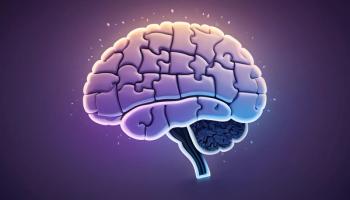
Neuropsychiatric Symptoms in Poststroke Patients
The prevalence of major depression following stroke ranges from 10% to 40%. Other psychiatric disorders, including anxiety disorders, apathy and cognitive impairment are also common. Psychiatrists need to be on the lookout for symptoms not just immediately poststroke, but up to six months after the event.
Psychiatric Times
January 2005
Vol. XXII
Issue 1
The prevalence and evolution of neuropsychiatric symptoms following a stroke warrant periodic psychiatric screenings, two experts recently told Psychiatric Times. Everybody who has had a stroke is at risk for a wide variety of emotional disorders ranging from depression, to pathological laughing and crying, to agnosia, said Robert G. Robinson, M.D., head of the department of psychiatry and Paul W. Penningroth professor of psychiatry at the University of Iowa. Robinson is known for his pioneering work in psychiatric disorders following stroke.
"All patients should be examined following stroke and at some regular intervals during the first couple of years for neuropsychiatric disorders," he said. Such disorders "are very common in the [post-stroke] population and can negatively impact" patients' physical recovery, cognitive recovery and, ultimately, their survival.
Donald M. Hilty, M.D., associate professor of clinical psychiatry at the University of California, Davis, School of Medicine and co-author of a recent article on poststroke neuropsychiatric illness (Bourgeois et al., 2004), said the need for better detection and periodic testing was particularly important for poststroke depression. The depression may not initially be present. Instead, it "may show up in a month, three months or six months." So, if clinicians screen for depression in the months after a stroke, they would likely identify several more cases.
Longitudinal studies have shown that about half the cases of depression occur in the first month following a stroke and the other half occur anywhere up to two years later, Robinson said.
Whether the delayed onset of depression is related to pathophysiological changes in the brain following a stroke or psychological responses to the impairments produced by stroke is a matter for further research, according to both Hilty and Robinson.
"My guess is that there are probably a number of patients who are developing late-onset depression that is related to psychological factors," said Robinson. "But we have also found in patients with delayed-onset depression ... that they have injury to the left frontal area of the brain. This finding suggests there may be biological and physiological changes occurring in the brain following stroke that lead to the development of delayed-onset depression."
Prevalence and Symptoms
Hilty, who is director of mood disorders and health services research at the University of California at Davis, said the prevalence of major depression after a stroke could range from 10% to 40%, depending on when it is detected. Patients with poststroke depression often differ from those with primary depression in that they have more cognitive impairment (memory and concentration problems), irritability, more psychomotor retardation (or slowing) and more mood lability, he said.
Risk factors for poststroke depression can include female gender, being younger than 60, being divorced, alcoholism, nonfluent aphasia, having a major motor deficit or cognitive deficits, and nursing-home placement (Bourgeois et al., 2004; Burvill et al., 1997).
Other common poststroke neuropsychiatric illnesses that Hilty sees are anxiety, cognitive impairment and apathy. The anxiety usually takes the form of generalized anxiety or feelings of panic, he said. The cognitive impairment can be a short-term problem marked by poor attention, poor memory, and a waxing and waning ability to be present.
When the cognitive impairment continues, it may indicate the presence of vascular dementia. Apathy in the absence of depression presents with such symptoms as a profound lack of initiative without tearfulness and sleep or appetite disturbances (Bourgeois et al., 2004; Robinson, 1997).
Hilty's clinical experience in seeing patients with various poststroke neuropsychiatric symptoms is supported by a recently published multicenter, cross-sectional study of poststroke patients (Angelelli et al., 2004). These researchers sought to characterize neuropsychiatric symptomatology and its evolution by studying a sample of 124 patients who had experienced a unilateral cerebral ischemic stroke, documented by computerized tomography or magnetic resonance imaging data. Patients were evaluated using the Neuropsychiatric Inventory (NPI) at specific time periods: 45 patients were evaluated two months after stroke; 45 patients, six months after stroke; and 34 patients, one year after stroke. They were compared to 61 age- and sex-matched healthy individuals. The NPI is an informant-based interview for evaluating behavioral changes (e.g., agitation, depression, anxiety, euphoria, apathy and irritability) following the onset of illness. Spouses and children of enrolled patients and of the healthy participants were interviewed using the 12-subscale version of the Neuropsychiatric Inventory (NPI).
The most common neuropsychiatric symptom was depressed mood, exhibited by 61% of all poststroke patients, the researchers found. It was followed by irritability (33%), appetite/eating disturbances (33%), agitation (28%), apathy (27%), anxiety (23%) and nighttime disturbances (18%). More rarely ( 10%), the researchers found aberrant motor behavior, disinhibition and euphoria. The least common symptoms were delusions (2%) and hallucinations (1%).
The depression symptomatology seemed to be a cluster of symptoms that the researchers described as "mostly as a feeling of uselessness and being a burden on family members, by sadness, [and] crying episodes." Irritability was characterized mainly by impatience with waiting and delays. Less frequently, irritability was characterized by flashes of anger, rapid mood changes and quarreling. While agitation was rarely manifested by throwing objects on the ground or banging doors, it was mainly shown through obstinacy, noncompliance, refusal to cooperate with the caregiver, crying and imprecations. Characterizations of apathy included a decrease in activities, inattention to usual interests, loss of interest in plans of significant others and reluctance to start a conversation. The primary manifestations of anxiety were excessive preoccupation about programmed events, subjective tension, inability to relax and separation anxiety. Nighttime behavior changes consisted primarily of insomnia.
This study also pointed to an evolution of neuropsychiatric disturbances:
The subacute phase (2 months poststroke) was characterized by depression, anxiety, irritability, eating disorders and sometimes by unjustified euphoria and aberrant motor behaviors. In the postacute phase, we observed an increase in apathetic behaviors and nighttime disturbances, while euphoria and aberrant motor behavior remitted. We also observed a non-significant trend for depression to peak at 6 months and for irritability to increase at 1 year poststroke.
Screening Tests and Treatment
To detect neuropsychiatric symptoms in stroke patients, Hilty said clinicians often use screening questions such as: "Are you feeling depressed? Are you feeling hopeless?"
Some patient self-report questionnaires (e.g., the 21-item Beck Depression Inventory [BDI], the 28-item version of the General Health Questionnaire [GHQ] and the Center for Epidemiological Studies-Depression scale [CES-D]), Hilty said, have been studied for poststroke depression and reported to be valid and reliable. When patients are unable to write following their stroke, their physician or another health care professional can ask them questions from the BDI or GHQ to which the patient can respond with a yes or no.
Hilty has also used a Visual Analog Scale (VAS) for depression, similar to the VAS for pain that involves a 0 to 10 scale. Patients mark on a horizontal line the point that they feel represents their perception of their current state.
If a patient has significant cognitive deficits, they may not be able to report depression as easily as other patients. In those situations a clinician evaluation using the Hamilton Rating Scale for Depression (HAM-D) or the Poststroke Depression Rating Scale (PSDRS) is recommended (Bourgeois et al., 2004). For assessing dementia symptoms in poststroke patients, these authors recommended the Folstein Mini-Mental State Exam (MMSE) or the CAMCOG (cognitive portion of the Cambridge Examination for Mental Disorders of the Elderly).
For detection of anxiety, Hilty said, there is a Hospital Anxiety and Depression Scale (HADS) that has been well studied.
With regard to treatment, Hilty urged inclusion of the basics: psychoeducation for the patient and family, ensuring communication, building a relationship with the patient, and providing supportive psychotherapy. Treatment must be aggressive, he said, so that depression does not prolong rehabilitation and prohibit social relationships.
There are no antidepressants specifically approved by the U.S. Food and Drug Administration for poststroke depression, according to Hilty. Generally, he uses the selective serotonin reuptake inhibitors, venlafaxine extended-release (Effexor XR) and even a few of the older tricyclic antidepressants to treat poststroke depression. Patients who are depressed following a stroke should take the antidepressants for at least six to 12 months, he added.
In some patients who are at high risk for poststroke depression (e.g., prior episodes of depression, left-sided lesions, history of other psychiatric illnesses, strong family history of psychiatric illness, no psychosocial support [Bourgeois et al., 2004]), Hilty and his colleagues will start using the antidepressants as a preventive approach. (See accompanying sidebar, p10 of the print edition--Ed.)
Psychostimulants also can be helpful for poststroke depression, Hilty said. "The point of that is to get people feeling better quickly. [Psychostimulants] seem to work, but there are risks in terms of side effects, such as seizures, psychosis or elevated mood," he said.
In his practice, Hilty uses psychostimulants in selected patients experiencing very severe depression (e.g., patients who are not eating and are declining very rapidly), but with caution and only for a month or two until an antidepressant is in place.
For patients who experience cognitive problems along with depression following their strokes, Hilty said he and his colleague, James Bourgeois, O.D., M.D., are exploring the use of acetylcholinesterase inhibitors, vitamin E and other neuroprotectants.
"The stroke itself may set off a cascade of processes that can damage the brain, and while the brain can often heal, the question is whether you could use these drugs to prevent some damage," Hilty said. He and colleagues are collecting some 50 case studies on this question.
For patients with poststroke anxiety disorders, Hilty said he prescribes antidepressants and occasionally an antiseizure medication, such as gabapentin (Neurontin), although this use is off-label. He avoids the use of benzodiazepines, since "they can cause worsening of confusion and memory problems in stroke patients."
"If someone has mood lability, then we use mood stabilizers, such as divalproex (Depakote)," he added.
When asked what advice regarding poststroke patients he would give to psychiatrists, Hilty, who is head psychiatric consultant for the Center for Health and Technology (i.e., telemedicine outreach to rural sites) and teaches medical students, residents and physicians in practice throughout the United States, replied that psychiatrists need to "teach other physicians to look for depression and other neuropsychiatric symptoms not just initially, but at three and six months as well."
If psychiatrists are acting as consultants to other physicians, they also need to do the periodic screenings themselves. They need to: 1) use some of the screening and assessment tools to gather more information; 2) start low and go slow with the initial dose of medications and the pace of dose increases; 3) consider prophylactic treatment for patients at high risk for poststroke depression after a stroke; and 4) make sure that a family physician, family member or they themselves maintain a good connection with the patient to reduce the patient's sense of isolation.
References
Angelelli P, Paolucci S, Bivona U et al. (2004), Development of neuropsychiatric symptoms in poststroke patients: a cross-sectional study. Acta Psychiatr Scand 110(1):55-63.
Bourgeois JA, Hilty DM, Chang CH et al. (2004), Poststroke neuropsychiatric illness: an integrated approach to diagnosis and management. Curr Treat Options Neurol 6(5):403-420.
Burvill P, Johnson G, Jamrozik K et al. (1997), Risk factors for post-stroke depression. Int J Geriatr Psychiatry 12(2):219-226.
Robinson RG (1997), Neuropsychiatric consequences of stroke. Annu Rev Med 48:217-218.
Newsletter
Receive trusted psychiatric news, expert analysis, and clinical insights — subscribe today to support your practice and your patients.

















